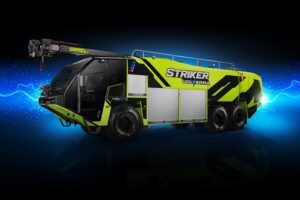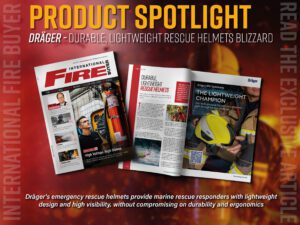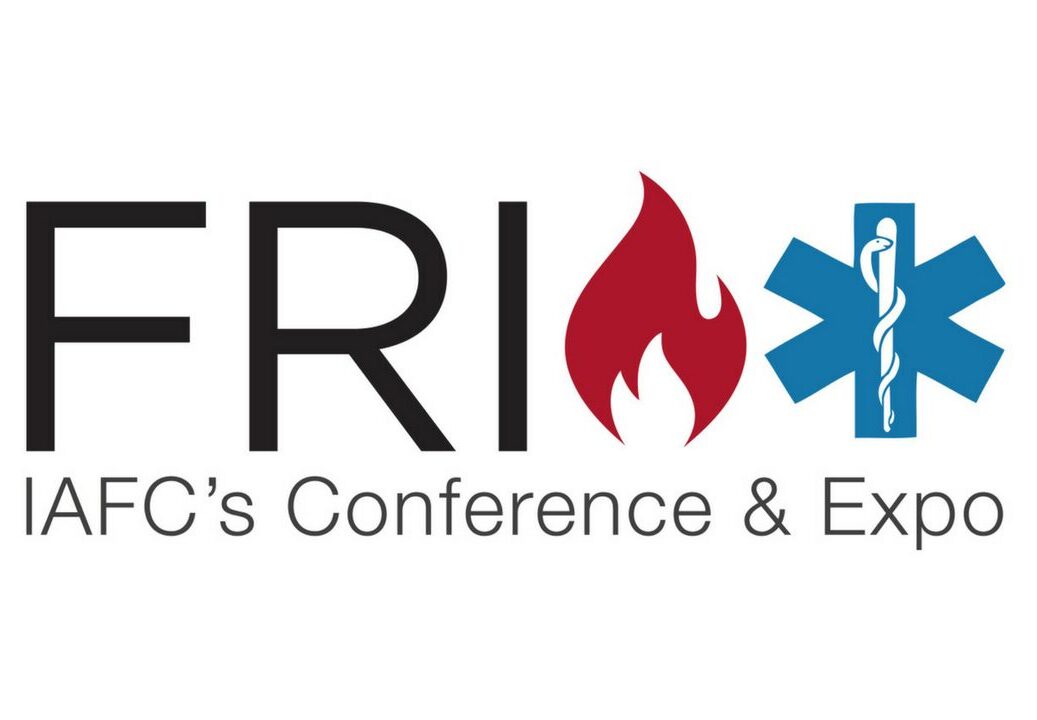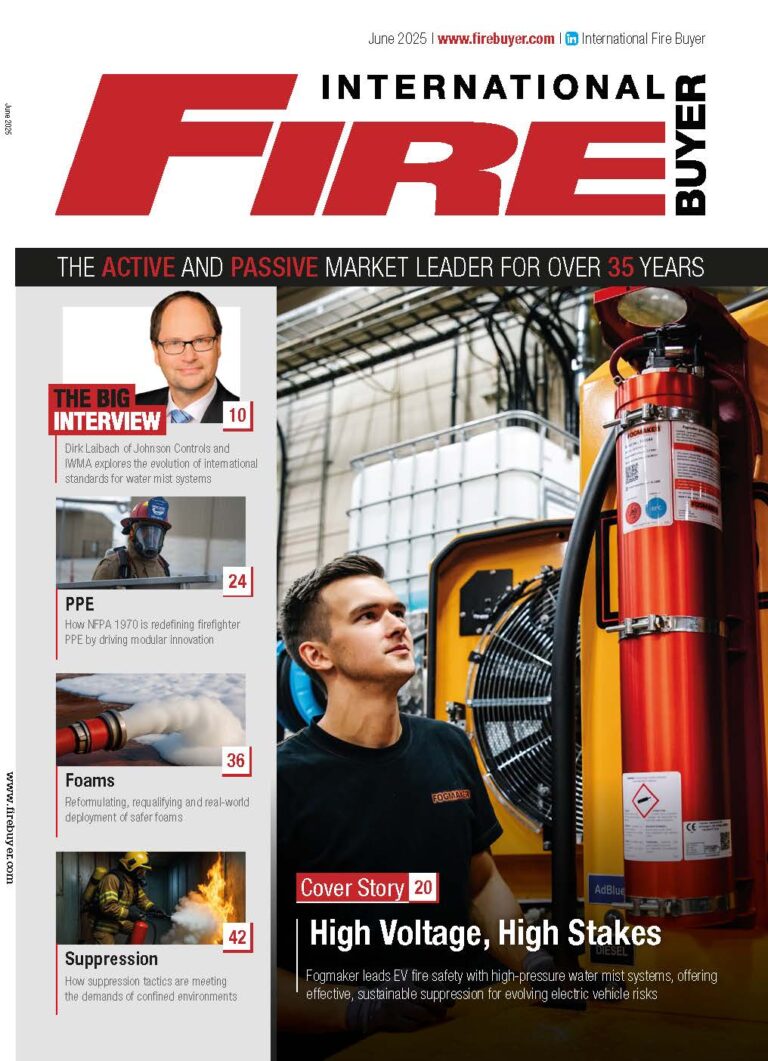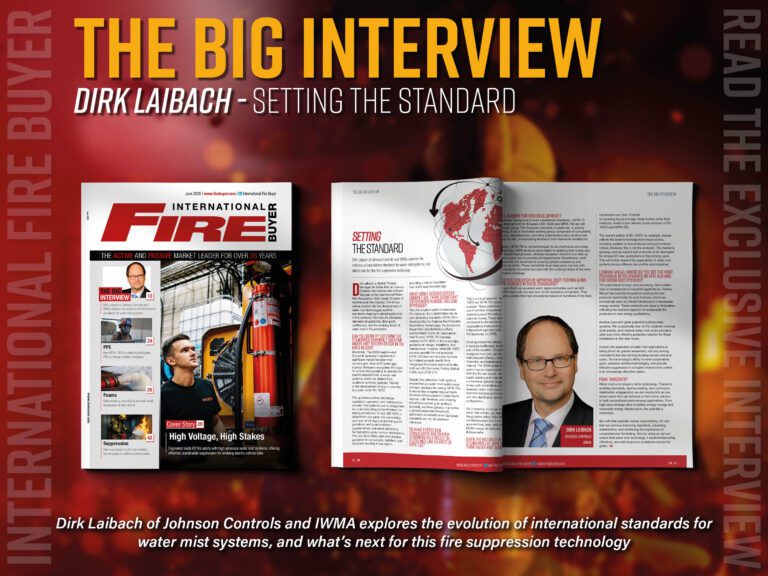Jim Pauley, President & CEO of the National fire Protection Association (NFPA) talks to International Fire Buyer about COVID-19, the Beirut disaster and the implications on the industry for the Big Interview in our latest edition of IFB.
Jim Pauley is President and CEO of the National Fire Protection Association (NFPA), a global self-funded non-profit organisation devoted to eliminating death, injury, property and economic loss due to fire, electrical and related hazards. NFPA delivers information and knowledge through more than 300 consensus codes and standards, research, training, education, outreach and advocacy; and by partnering with others who share an interest in furthering the NFPA mission. Jim Pauley discusses with Fire Buyer Features Editor, the poignant issues currently dominating the industry.
How do you think COVID 19 has impacted the industry?
There was not a business or industry that was not impacted by COVID 19. Within the fire, life and electrical safety spaces policymakers, enforcers, facility managers and first responders all grappled with the reality that buildings under construction or under-utilised created a set of challenges; buildings being repurposed to care for COVID patients or to provide respite for healthcare workers had safety ramifications; limited access to buildings and spaces threatened the ability to effectively conduct inspections; and above all, these times continue to place extraordinary pressure on first responders who are faced with dealing with every aspect of the pandemic in their communities.
While the coronavirus challenged the building and life safety communities these past six months, on many levels, it has been familiar territory for NFPA given our Association’s long history of addressing new threats and emerging hazards.
Our initial response centered around NFPA 1600 Standard on Continuity, Emergency, and Crisis Management. The 9/11 Commission recognised NFPA 1600 as our National Preparedness Standard. It is widely used by public, not-for-profit, non governmental and private entities in times of crisis.
We anticipated the demands that would come with hospital surge because we have worked with healthcare administrators for years. The US Centers for Medicare & Medicaid Services (CMS) require hospitals and others to develop emergency preparedness plans that meet the inspection, testing and maintenance (ITM) requirements in NFPA 110, Standard for Emergency and Standby Power Systems, as well as the safety benchmarks identified in NFPA 99 Health Care Facilities Code and NFPA 101, Life Safety Code.
We generated insights to help code enforcers and building authorities close and reopen buildings and emphasised the importance of maintaining fire protection and life safety systems despite shutdowns. Fact sheets, white papers, podcasts, webinars and videos provided timely tips for navigating the new normal while keeping safe assembly, egress, ITM, and worker safety at the forefront.
We generated public education messaging on everything from hand sanitisers, cooking fires during quarantine, electrical safety due to more people at home using more equipment, and evacuations during COVID-times. All of this information resides on our webpage nfpa.org/coronavirus.
If there is a silver lining to these harrowing times, it is that more people will have a better understanding of what’s required to truly ensure the public safely.
The NFPA has substantial online resources for the industry, has this been heightened because of the digital shift during COVID 19?
Over the last century NFPA has earned a reputation globally for being the premier fire and life safety authority, but without question, our staff really stepped up during COVID 19 to help reduce risk. We have received great feedback about our nimble approach these past six months.
The interesting thing is that when the virus hit the US, NFPA was already well into a digital transformation journey to better meet the needs of stakeholders who increasingly want information on any device, at any time, in order to solve problems in real time.
Despite great demands on our organisation during these unprecedented times, we recently launched NFPA LiNK, our new content on demand platform. It is fundamentally transforming the way that we deliver information and our stakeholders gain insights. Right now, NFPA LiNK includes the four most recent editions of the National Electrical Code and code related content; additional codes and resources will be integrated in the months ahead. At full development, NFPA LiNK will deliver intuitive, seamless, situation and code-based information, and ultimately change the way that safety professionals access and apply best practices.
Training and Education is a big part of NFPA, have you seen a shift in e-learning recently, and is this something to continue?
Absolutely. We have been monitoring learning trends for years and building out new digital deliverables before COVID but circumstances really accelerated our efforts. Our new, enhanced virtual educational offerings have been well-received by those charged with protecting people and property. This year, we have introduced new live virtual training with interesting new features. We launched Learning Path programs that help people prepare for important certification credential exams and debuted new NEC online training that is consistent with the current version of the code. And we’ve developed new topical training that teaches how different codes impact systems.
Aside from COVID, the Beirut disaster has also shocked the world, could you talk about what led to this tragedy, and are we at risk elsewhere?
Our hearts go out to the people of Lebanon, who will be dealing with the fallout from this catastrophic incident for years to come. Sadly, the incident in Beirut points to an all-too-familiar breakdown in safety. Storing an abundance of fireworks, bypassing code enforcement efforts, allowing unskilled labour to perform hot work in an area where welding and torching should never have taken place all point to NFPA Fire & Life Safety Ecosystem failures. There are eight interdependent components in the Fire & Life Safety Ecosystem.
When any component is missing or broken, the Ecosystem can collapse, often resulting in tragedies like we saw in Beirut in August.
We have spent the better part of two years discussing the Ecosystem around the world. The Ecosystem has been translated in eight languages and is being used often as the framework for forward-facing discussions.
Anything else on your mind?
Whether during a global pandemic, in the aftermath of tragedies, or as we address persistent life safety issues on a local level, it is important to remember that safety is a system and we all play an important role.
Share this post on our LinkedIn or Twitter.
See more news here.




